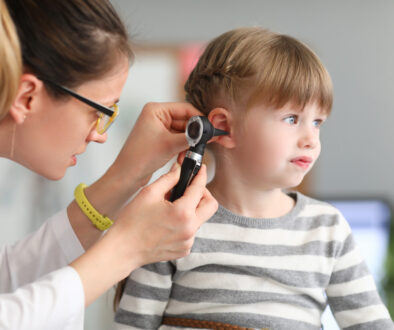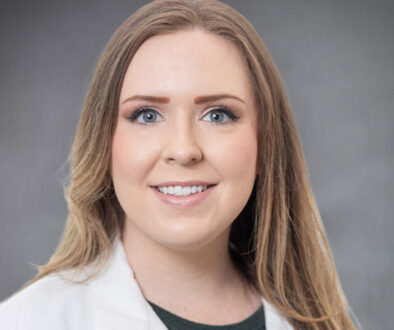Five Procedures We Perform In Our Office
If your child has painful ear infections and needs to have ear tubes, this doesn’t necessarily mean a trip to the hospital, or even to the outpatient surgery unit. This is one of several services we are able to perform on site. In-office procedures are not only more convenient, but they are also less expensive than those performed in a hospital.
Because Raleigh Capitol Ear, Nose and Throat is independently owned and operated, we’re not required to perform a procedure in a hospital if it can be safely done in our office.
Some of our most common in-office procedures
Our in-office procedures provide comprehensive solutions to come of the most common ear, nose and throat problems. Following are five of the most common:
1. Myringotomy with ear tube placement
A myringotomy (myr-in-got-o-me) with tube placement provides welcome relief for children or adults who have chronic viral or bacterial ear infections. Often, the source of these problems is fluid is trapped in the middle ear. If left untreated, this condition can lead to hearing problems which will affect all aspects of life.
We’re fortunate to have two physicians who perform this procedure in-office: Dr. Laura Brown and Dr. Stephen E. Boyce.
Dr. Brown’s practice encompasses all aspects of general otolaryngology with special interest in pediatric otolaryngology (including newborns), allergy evaluation and management, nasal and sinus surgery, hearing loss, and endocrine surgery.
Dr. Boyce’s practice encompasses all aspects of otolaryngology, but he especially enjoys pediatric ENT, thyroid and pituitary surgery, nasal and ear surgery, and treating voice disorders.
During a myringotomy, a small incision is made in the ear drum. Myringotomy with tube placement
involves inserting a small tube through this incision that allows fluid to drain. After six to 18 months, the tubes fall out on their own. Myringotomy with tubes is performed on adults, and two of our physicians perform this procedure in the office on small children in certain circumstances.
2. Keloid removal
Keloids are raised “bumps” caused by overgrowth of scar tissue, typically the result of a skin injury, acne, ear piercing or burns. While they’re rarely harmful, they can affect your appearance, particularly if located on your face or arms.
Keloids that are a result of an injury are often irritated, tender and itchy. Most are flesh-colored, pink, or red.
If you have a keloid, your doctor will perform a biopsy first to ensure that there is no cancer present. Treatment may include:
- Cryotherapy (freezing the keloid)
- Laser treatments
- Silicone patches
- Corticosteroid shots
- Surgical removal
Keloids are most common in those between ages 10 and 20. The tendency to develop keloids runs in families, and they are more common in those with African-American, Hispanic or Asian heritage.
3. Facial reconstruction after Mohs procedures
Mohs is a revolutionary surgical technique dermatologists use to removes skin cancer layer by layer. This method ensures that all of the cancer is removed and as much healthy tissue as possible is spared.
However, Mohs often leaves patients with large “holes” or defects in the skin where the cancer was removed. Facial defects are particularly traumatic and can have a devastating impact on appearance and self-esteem.
We’re able to offer several facial plastic surgeries to correct these defects using a variety of techniques including skin grafts and flaps. Post-operative pictures demonstrate the dramatic difference these procedures make.
4. Balloon sinuplasty
When prolonged, chronic and recurring sinus infections don’t improve, a balloon sinuplasty is a viable option. This minimally-invasive procedure uses a tiny balloon to open blocked sinus passages, allowing them to drain. Once the sinuses are open, they may also be irrigated.
Since its introduction in 2004, balloon sinuplasty has shown a consistently impressive track record of successfully treating patients, resulting in long-lasting benefits. Not only does the procedure provide almost immediate relief, but studies also show that 95 percent of patients still showed improvement nine months after the procedure. After two years, 85 percent reported their symptoms were still relieved.
At Raleigh Capitol Ear, Nose and Throat, we can perform the sinuplasty procedure in-office using local anesthesia.
5. Tongue-tie excision (ankyloglossia)
Children who have a tongue-tie aren’t able to use their tongue normally due to a strong cord of tissue called the frenulum. It’s used to guide incoming teeth, and it eventually recedes and thins.
In some children, the frenulum fails to recede. As a result, it attaches the tip of the tongue to the bottom of the mouth, severely restricting the tongue’s range of motion.
Tongue-tie can cause extensive problems with:
- Feeding: Tongue-tied infants aren’t able to nurse properly and may have difficulty gaining weight. It’s often an underlying cause of nursing problems.
- Speech development: Children who have tongue-tie may demonstrate speech problems, usually starting around the age of three.
- Dental health: Tongue-tied children may develop a gap between the bottom two front teeth and be plagued by constant dental problems.
Tongue-ties are treated by surgically cutting the frenulum to free the tongue — a procedure we can do in our office.
Not sure if your child may have a tongue-tie? Here’s a simple test: can your child lick an ice cream cone without difficulty? If you think your child may have a tongue-tie, contact one of our ear, nose and throat physicians. We specialize in treating children of all ages.
Other in-office procedures are available
At Raleigh Capitol Ear, Nose and Throat, we embrace the technological innovations that enable us to serve you more effectively and efficiently. Other in-office procedures we offer are:
- Removal of cysts or nasal obstructions
- Biopsy of lesions
- Otoplasty
- CT scans with our state-of the-art CT scanner that uses only one-tenth of the radiation other scanners do.
- Botox injections
- Treatment for nasal fractures
- Torn earlobe repair
- Uvulectomy (removing the uvula, the flap that hangs down from the top of the throat)
Our team of ear, nose and throat physicians have decades of extensive expertise in treating a wide variety of ENT illnesses. If you’re interested in learning more about our in-office treatments, contact us.




